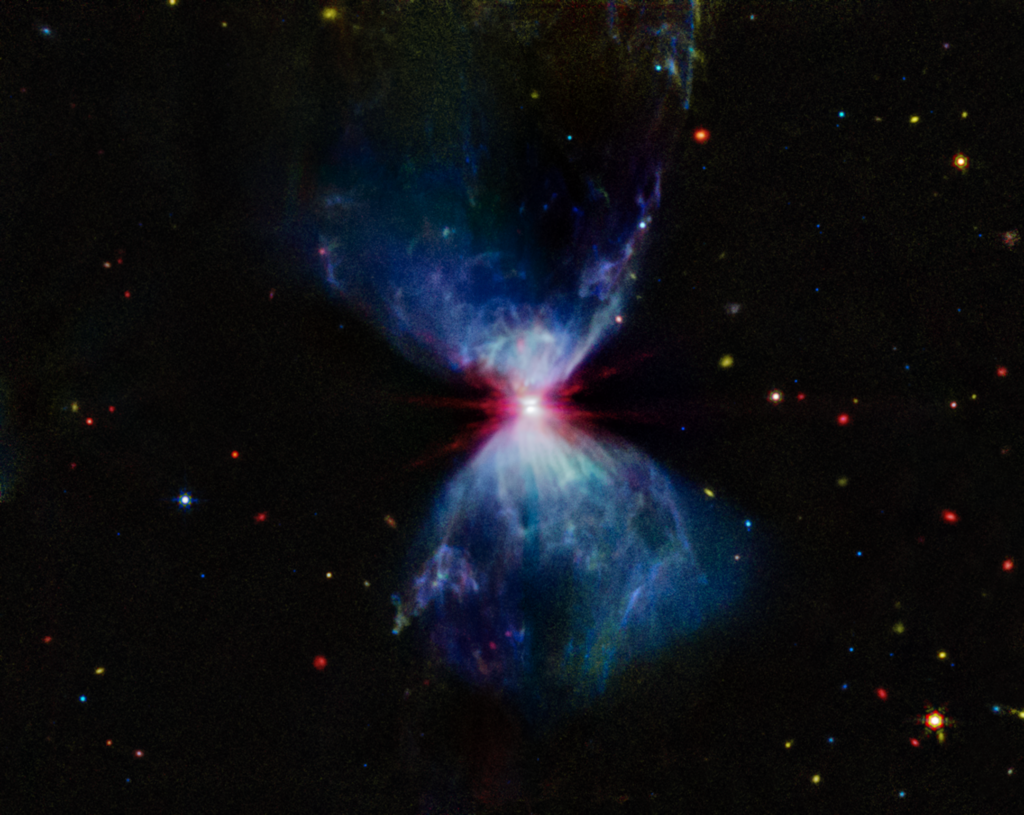NASA has published an image obtained by the James Webb Space Telescope (JWST). It gives the impression that the space comes alive with explosions of pyrotechnics. A fiery hourglass photographed by the telescope marks the scene of a protostar’s birth.

The region captured by JWST, is located about 460 light-years away from Earth toward the constellation Taurus. It’s a molecular cloud known as L1527. Right now, a new star is forming in it. Astronomers estimate it to be 100,000 years old.
The bright red region at the center of the JWST image shows a growing protostar, with a thin gray band of matter running horizontally through it. This is the accretion disk. It contains the matter that is used to grow the protostar. In the future, it will also give rise to its planetary system.
Some of the matter from the protoplanetary disk is ejected by the star in opposite directions along its axis of rotation. They interact with the surrounding matter to create the characteristic structures that give the hourglass shape. Star jets are also responsible for the fireworks effect: they excite the surrounding matter, making it glow.
The blue color corresponds to organic compounds known as polycyclic aromatic hydrocarbons. The protostar and the dense blanket of dust and gas mixture that surrounds it are represented in red (red expansions resembling sparks — an artifact of telescope optics). The white area between them is a mixture of hydrocarbons, ionized neon, and thick dust.
As the protostar ages and jets are ejected, it will absorb, collapse, and push out much of this molecular cloud, and many of the structures we see here will begin to disappear. Eventually, when it finishes gaining mass, this spectacular sight will cease to exist, and the star will become more visible in the optical range.
Earlier we told you about how James Webb found the most distant star cluster.
According to NASA


